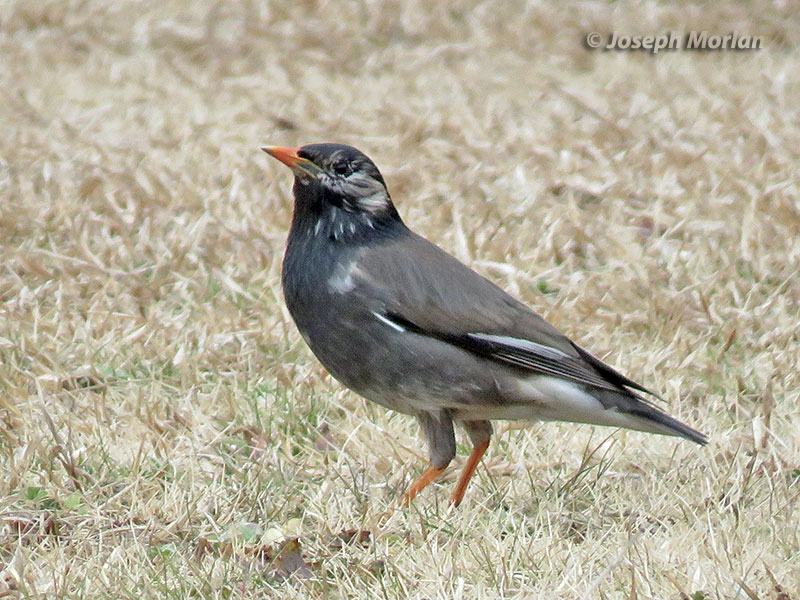
This is an adult male showing black throat and crown. Females are duller. Elongated throat and nape feathers may give this bird a disheveled appearance. This colonial species is famous for brood parasitism in which females may lay eggs in nests of other females. Existing eggs are not removed resulting in some very large clutches. This species was formerly called the "Grey Starling." It and the Red-billed Starling of China have been moved from Sturna into the genus Spodiopsar based on molecular findings by Loveette et al. and Zuccon et al. Canon PowerShot SX60 HS.
References:
Craig, A. & Feare, C. (2017). White-cheeked Starling (Spodiopsar cineraceus). In: del Hoyo, J., Elliott, A., Sargatal, J., Christie, D.A. & de Juana, E. (eds.). Handbook of the Birds of the World Alive. Lynx Edicions, Barcelona. (retrieved from http://www.hbw.com/node/60854 on 3 June 2017).
Lovette, I.J., B.V. McCleery, A.L. Talaba & D.R. Rubenstein. (2008). A complete species-level molecular phylogeny for the Eurasian starlings (Sturnidae: Sturnus, Acridotheres, and allies): recent diversification in a highly social and dispersive avian group. Molecular Phylogenetics and Evolution 47:251-260.
Zuccon, D., E. Pasquet & P.G.P. Ericson. (2008). Phylogenetic relationships among Palearctic-Oriental starlings and mynas (genera Sturnus and Acridotheres: Sturnidae). Zoologica Scripta 37:469-481.